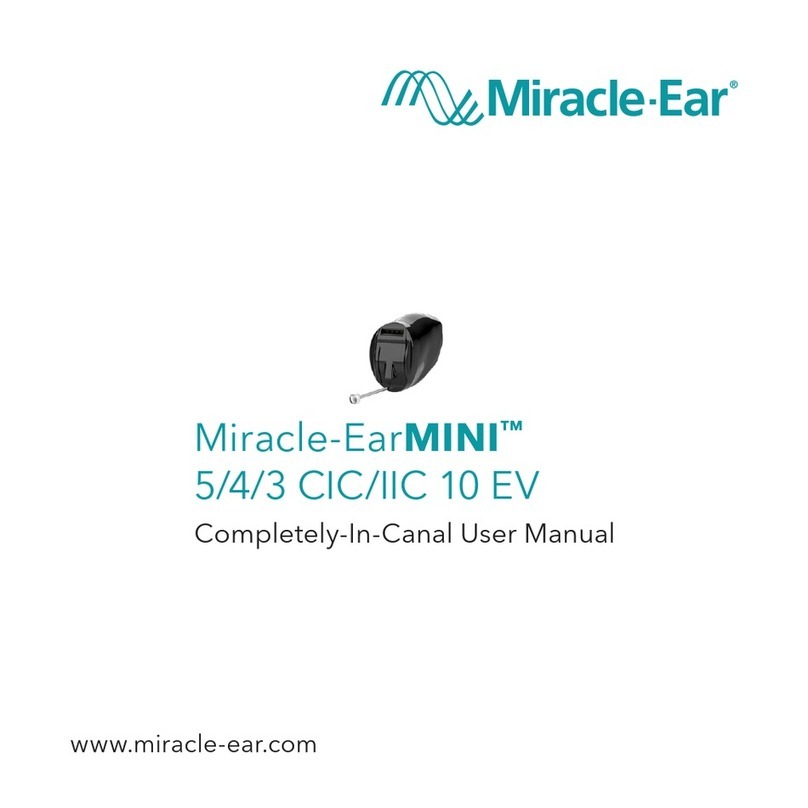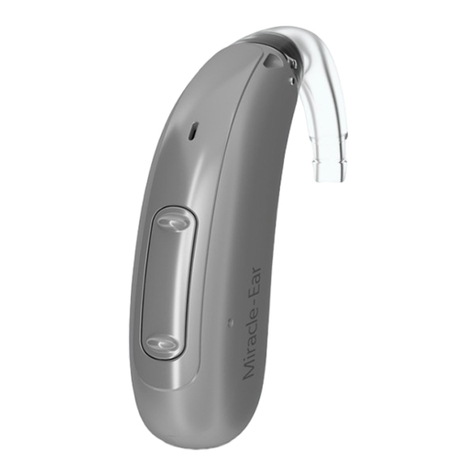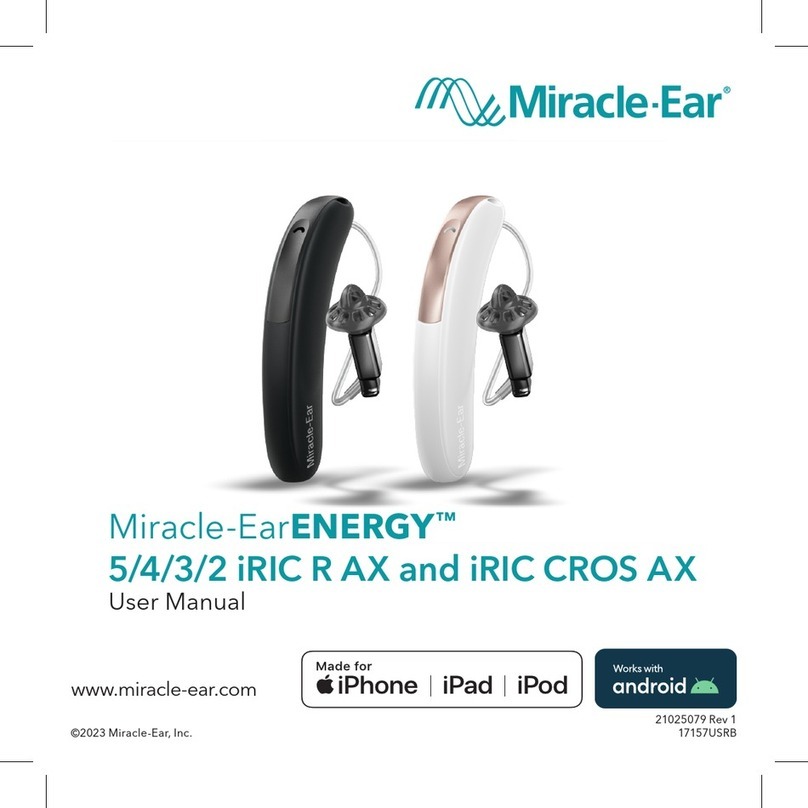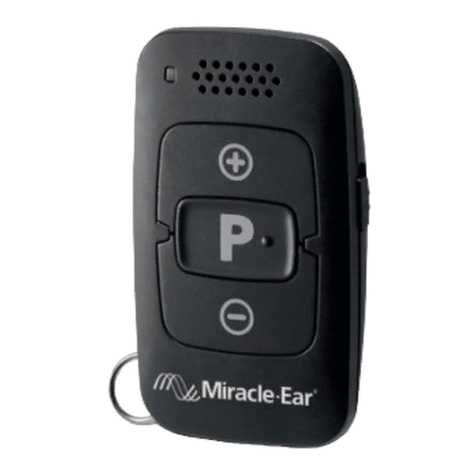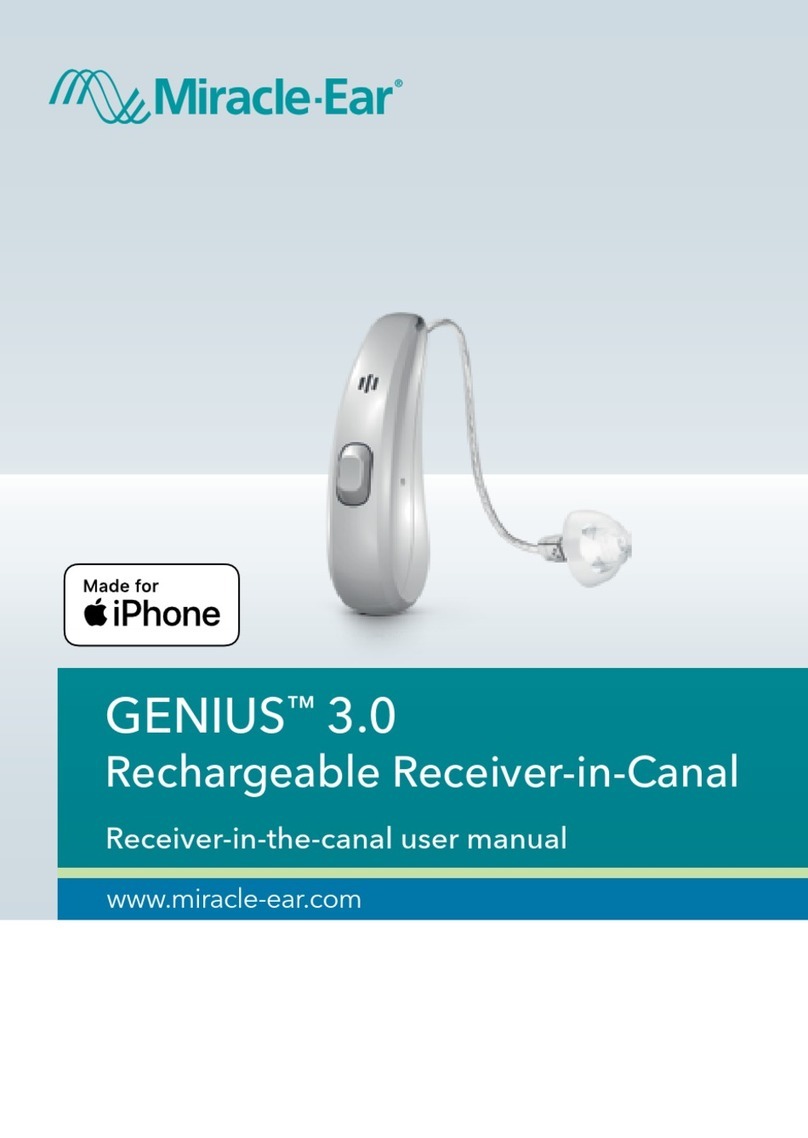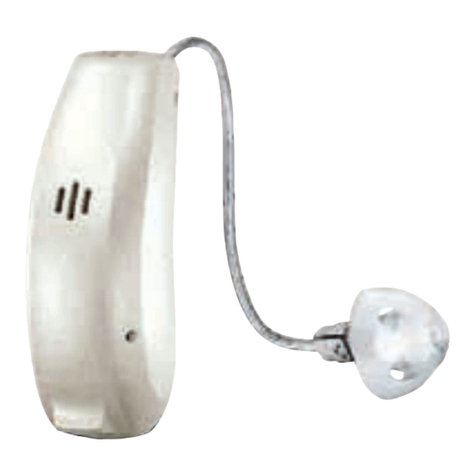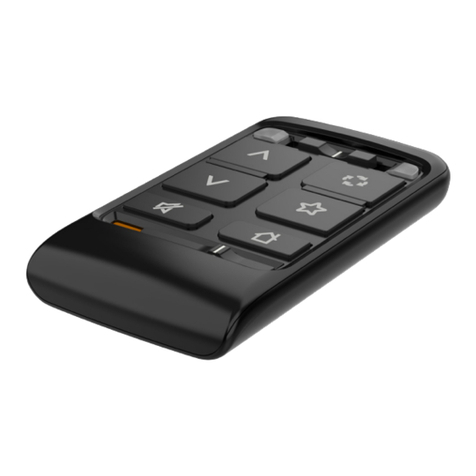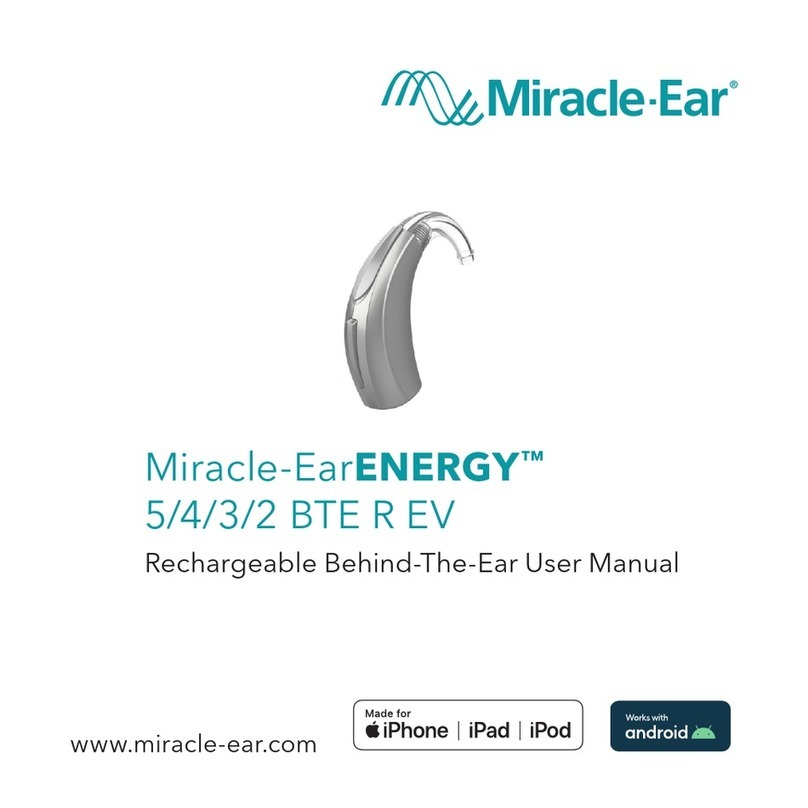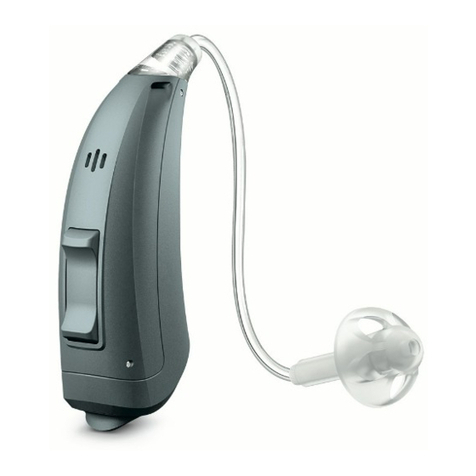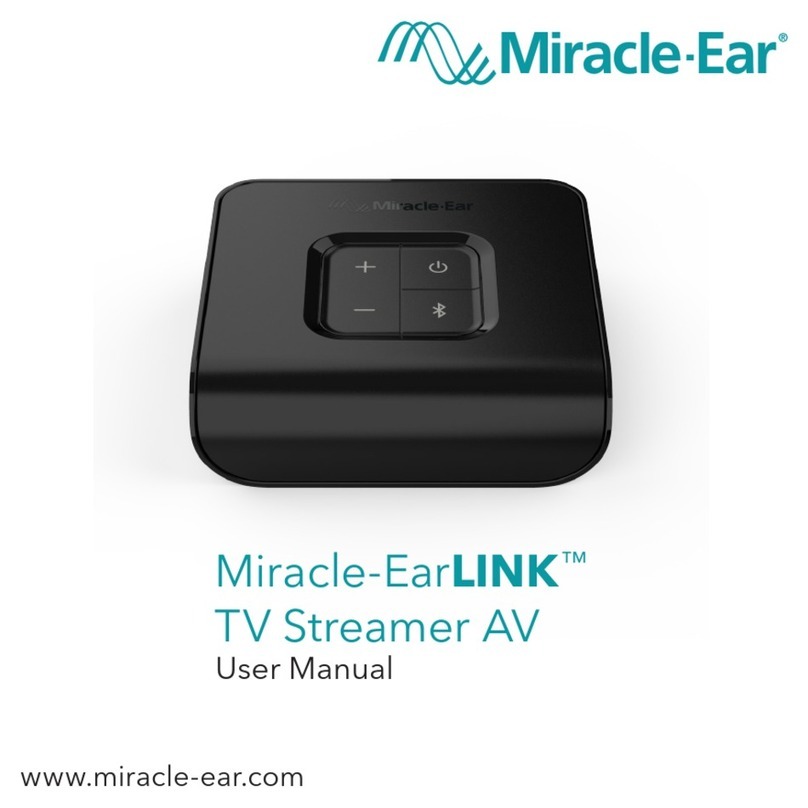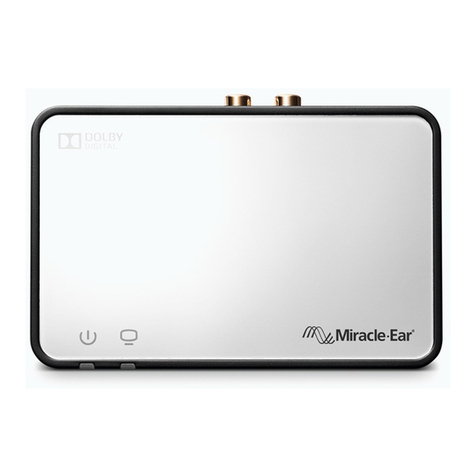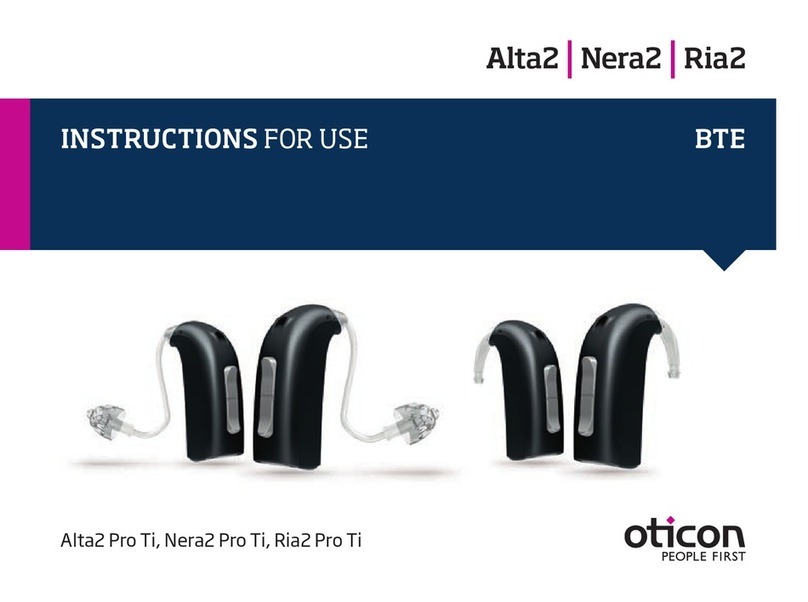
54
WARNINGS, CAUTIONS, & NOTICES WARNINGS, CAUTIONS, & NOTICES
WARNING TO HEARING CARE PROFESSIONAL
A hearing care professional should advise a prospective sound generator
(tinnitus masker) user to consult promptly with a licensed physician (preferably
an ear specialist) before using a sound generator if the hearing care professional
determines through inquiry, actual observation or review or any other available
information concerning the prospective user that the prospective user has any of
the following conditions:
• Visible congenital or traumatic deformity of the ear
• History of active drainage from the ear within the previous 90 days
• History of sudden or rapidly progressive hearing loss within the previous 90 days
• Acute or chronic dizziness
• Unilateral hearing loss of sudden or recent onset within the previous 90 days
WARNING: There are some potential concerns associated with the use of any
sound generating tinnitus therapy instrument. Among them are the potential for
worsening of tinnitus, a possible change in hearing thresholds, and possible skin
irritation at the point of contact with the hearing aid.
Custom Tinnitus+™Technology has been designed to minimize these concerns.
However, should you experience or notice any of the above conditions or any
dizziness, nausea, headaches or heart palpitations, you should immediately
discontinue use of the hearing aid and seek a consultation with a medical, audiology
or other hearing care professional.
As with any hearing aid, misuse of the tinnitus therapy instrument could present
some potentially harmful effects. Care should be taken to prevent the unauthorized
use and to keep the hearing aid out of the reach of children and pets.
CAUTION: This is not hearing protection.
You should remove this device if you experience overly loud sounds, whether short
or long-lasting. If you’re in a loud place, you should use the right kind of hearing
protection instead of wearing this device. In general, if you would use ear plugs in a
loud place, you should remove this device and use ear plugs.
CAUTION: The sound output should not be uncomfortable or painful.
You should turn down the volume or remove the device if the sound output is
uncomfortably loud or painful. If you consistently need to turn the volume down, you
may need to further adjust your device.
CAUTION: You might need medical help if a piece gets stuck in your ear.
If any part of your hearing aid, like the eartip, gets stuck in your ear, and you can’t
easily remove it with your fingers, get medical help as soon as you can. You should
not try to use tweezers or cotton swabs because they can push the part farther into
your ear, injuring your eardrum or ear canal, possibly seriously.
NOTE: What you might expect when you start using a hearing aid.
A hearing aid can benefit many people with hearing loss. However, you should know
it will not restore normal hearing, and you may still have some difficulty hearing over
noise. Further, a hearing aid will not prevent or improve a medical condition that
causes hearing loss.
People who start using hearing aids sometimes need a few weeks to get used to
them. Similarly, many people find that training or counseling can help them get more
out of their devices.
If you have hearing loss in both ears, you might get more out of using hearing aids in
both, especially in situations that make you tired from listening—for example, noisy
environments.
NOTE: Tell FDA about injuries, malfunctions, or other adverse events.
To report a problem involving your hearing aid, you should submit information to
FDA as soon as possible after the problem. FDA calls them “adverse events,” and they
might include: skin irritation in your ear, injury from the device (like cuts or scratches,
or burns from an overheated battery), pieces of the device getting stuck in your ear,
suddenly worsening hearing loss from using the devices, etc.
Instructions for reporting are available at https://www.fda.gov/Safety/MedWatch, or
call 1-800-FDA-1088. You can also download a form to mail to FDA.





